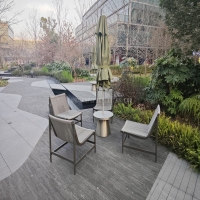Welcome to the website for landscape facilities products and knowledge.
How does the table’s design enhance or hinder social interaction among users?
The design of a table is far more than an aesthetic choice; it is a powerful, often subconscious, architect of human interaction. Its dimensions, shape, and overall layout can either serve as a bridge, fostering collaboration and conversation, or as a barrier, creating distance and isolation. A round table, for instance, is a classic tool for promoting equality and open dialogue. With no head, it eliminates hierarchical seating, encouraging eye contact and making every participant feel equally involved. This design is inherently conversational, facilitating a free flow of ideas and creating a sense of unity among users, making it ideal for brainstorming sessions or casual social gatherings.
Conversely, long, rectangular tables often establish a formal and sometimes divisive atmosphere. The positions at the head of the table naturally assume a leadership or authoritative role, while individuals seated along the lengthy sides may have difficulty engaging with those directly opposite them. This setup can hinder cross-table conversation and may unintentionally create subgroups, limiting the collective dynamic. The physical distance itself can be a psychological barrier, making spontaneous interaction less likely.
Beyond shape, the size and proportion of a table are critical. An overly large table forces users to raise their voices to be heard, discouraging intimate or nuanced discussion. In contrast, a table that is too small can feel cramped and invasive, leading to discomfort rather than collaboration. The modern solution of modular or flexible tables offers a dynamic alternative. These can be reconfigured to suit different group sizes and purposes, from a large collaborative workshop to smaller, focused team huddles, thus adapting the social environment to the task at hand.
Furthermore, elements like transparency (using materials like glass) can maintain a visual connection even when a table is large, preserving a sense of shared space. The inclusion of built-in power outlets and data ports can also subtly influence interaction by either tethering individuals to their devices or, if strategically placed, encouraging shared use of a central technology hub. Ultimately, every design choice, from the legs that dictate legroom to the surface that defines personal territory, sends a silent cue about how people should engage. By understanding this psychology of furniture, we can intentionally design our spaces—be it in offices, cafes, or homes—to either enhance the social bonds we wish to build or establish the focused boundaries we require.
Related search:

Recommendation
Metal structure rattan chair without armrests for single person, with woven seat and backrest.